Sonic For Science Part 1: Geochemical Analysis of Rare Earth Elements In Florida's Bone Valley
By: cascadeEnvironmental drilling, specifically the use of sonic technology, is reaching new depths as it increasingly integrates with the world of science. In this story, read how sonic drilling provides a clearer vision of Florida geology to better understand rare earth elements. Rare earth elements (REEs) are an important industrial resource used in the commercial production of electronics, defense technologies, and green energy systems. Increased manufacturing is driving global demand and scientists are searching for new methods to recover these elements in a more sustainable manner. Some geologists believe the answer lies buried in phosphate deposits.
Central Florida’s Bone Valley accounts for 85% of the ~30 million tons of U.S. phosphate production, thus presenting itself as a great opportunity for Florida State University’s Master of Science student Kyle Turner to gain a better understanding of the chemical makeup of phosphate deposits through thesis research. Kyle hypothesizes that phosphorite deposits are an untouched source of REEs here in the U.S.
Kyle’s Hypothesis
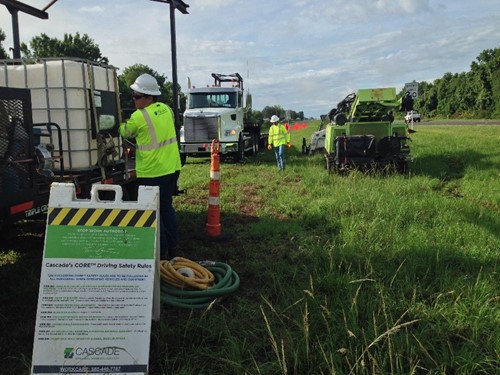
As the global demand for REEs increases, the search for new REE deposits continues to expand. The Central Florida phosphate district offers the opportunity for recovery of REEs as an ancillary mineral pertaining to the production of phosphate. The Miocene-aged Bone Valley Member of the Hawthorn Group is a vast land-pebble phosphate deposit stretching through portions of West Central Florida’s Polk, Hillsborough, Manatee and Hardee counties. Though minimal research has been done in regards to REEs existing in Central Florida phosphorite deposits, data available illustrates that REEs are present in economically valuable amounts within the Bone Valley Member of the Peace River Formation. If this trend is a reflection of the entire Central Florida phosphate district, the region offers an answer to the global demand for REEs in a relatively easy to access ore body. With the use of advanced geochemical equipment and statistical analysis programs, mapping concentrations of REEs across 3-dimensional space in the Central Florida Phosphate district will help to answer questions about the spatiotemporal depositional environment.
Project Goals
Kyle’s project end goal was threefold:
- Determine the concentrations and type of REEs present within the Bone Valley/Hawthorn Group
- Better constrain the sorting and/or depositional components influencing the location of REEs
- Produce a 3D block model showing the overall trends of REEs across the Central Florida phosphate district
Project Methods
FIELD SAMPLING
The first step toward proving his thesis required high-quality (>90% recovery) core samples to identify the presence and concentration of REEs in the subsurface. Samples had to be obtained from the Bone Valley Member of the Peace River Formation, Hawthorn Group. An organized sampling plan took place across the region at a variety of locations in order to determine trends in REEs with spatial reference.
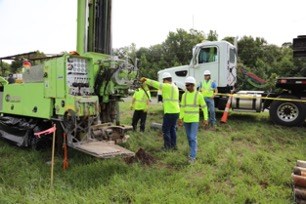
Due to the makeup of the geology, sand with clay above and below, it was recommended that sonic drilling rigs be used to obtain the sample cores. Sonic is the best method to obtain samples that clearly show the geologic context of how each lithological component has been deposited over time. With little to no disturbance of the core, the sonic method would allow Kyle, academic advisers, and state geologists to see exactly how each mineral was laid down in nature. Sonic would also significantly speed up the sampling time, with each location taking less than three hours.
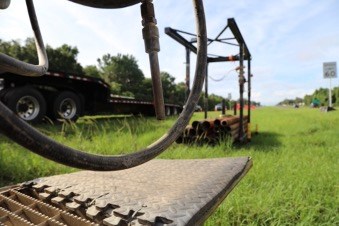
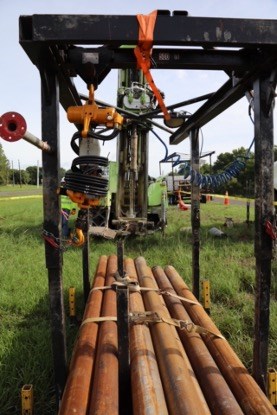
Kyle contracted with Cascade’s local office to accomplish the sampling portion of the project. The site was chosen by Kyle and the Cascade drilling team based on accessibility and proximity to local mines. The drilling location was on relatively flat terrain right alongside an active highway so site access was not issue for the Compact Crawler. The weather was the most significant challenge as it rained heavily the first day of drilling and slowed progress down.
Samples were taken both above and below the mining unit in order to account for potential soil leaching. Soil leaching could alter the REEs through interaction with meteoric water. A minimum sample size of approximately ~1 g is enough for multiple analysis. Sample split of 10 to 20 mg was needed for chemical digestion prior to analysis. When collecting the samples, a minimum of at least 200 samples were needed in order to have enough geochemical data to correlate REE trends across 3-dimensional space. Samples were taken from the core, dried in a low temperature oven, and then examined under a microscope where phosphate minerals were separated from the sands, silts, and clays. Finally, once extracted, samples were stored in airtight containers until geochemical analysis could be done.
Upon inspection, the Assistant State Geologist of Florida was amazed at the high quality of the cores and how they showed the sub surficial geology in an untouched state. Previous samples from other projects had been collected using mud rotary rigs, which produced very messy samples that lacked special integrity.
LABORATORY PROCEDURES
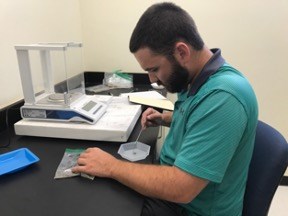
The next step was to take the samples to the National High Magnetic Field Laboratory (MagLab), the largest and highest-powered magnet laboratory in the world. Since samples from the Bone Valley region consisted mainly of pebbles, gravels and sands, only minimal crushing of the samples was necessary. To avoid field contamination, the centermost portion of the sample was used. Once crushed, samples were powdered and taken to the MagLab for analysis. Samples, approximately 10mg in size, were placed into vials in which trace metal clean acids were used to digest the sample.
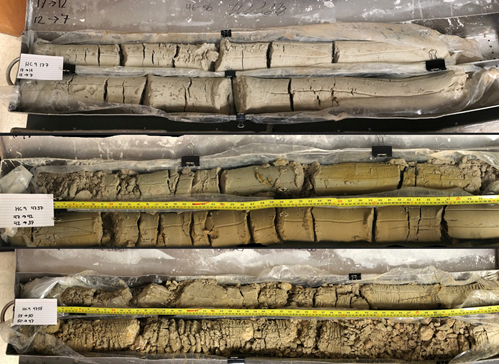
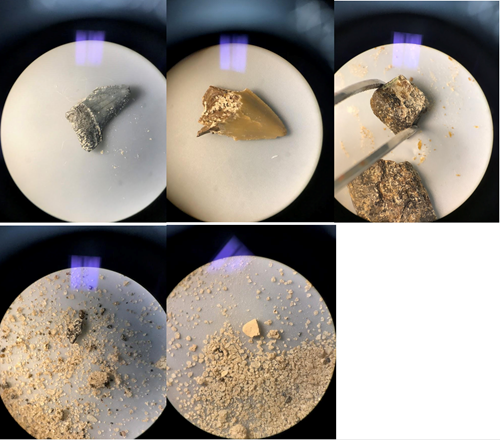
Once digested and brought up to a known volume, geochemical analysis of the samples is conducted using an Agilent 7500cs q1 ICP-MS. As samples are processed by the instrument, values in the form of concentrations will be obtained, expected to range from parts per billion (ppb) to parts per million (ppm). Internal standards are used to correct for drift during analysis.
Initial results confirmed economically valuable amounts within the Bone Valley Formation, which may lead to significant developments in satisfying the global demand for REEs in a relatively easy to access ore body.
ANALYTICAL METHODS
As Kyle moves toward completion of his laboratory work, analytical data will be compiled showing the chemical components present within each sample. Through a variety of data analysis tools, the samples will be plotted showing overall trends, with the capability to show grouping among the samples, overall distribution of the samples, and with spatial information should be able to show the relationship of REEs present vs. spatial position. Once data trends have been determined and there is an overall idea regarding how REE concentrations vary across the region, a 3-dimensional-block model will be constructed of the Central Florida phosphate district.

